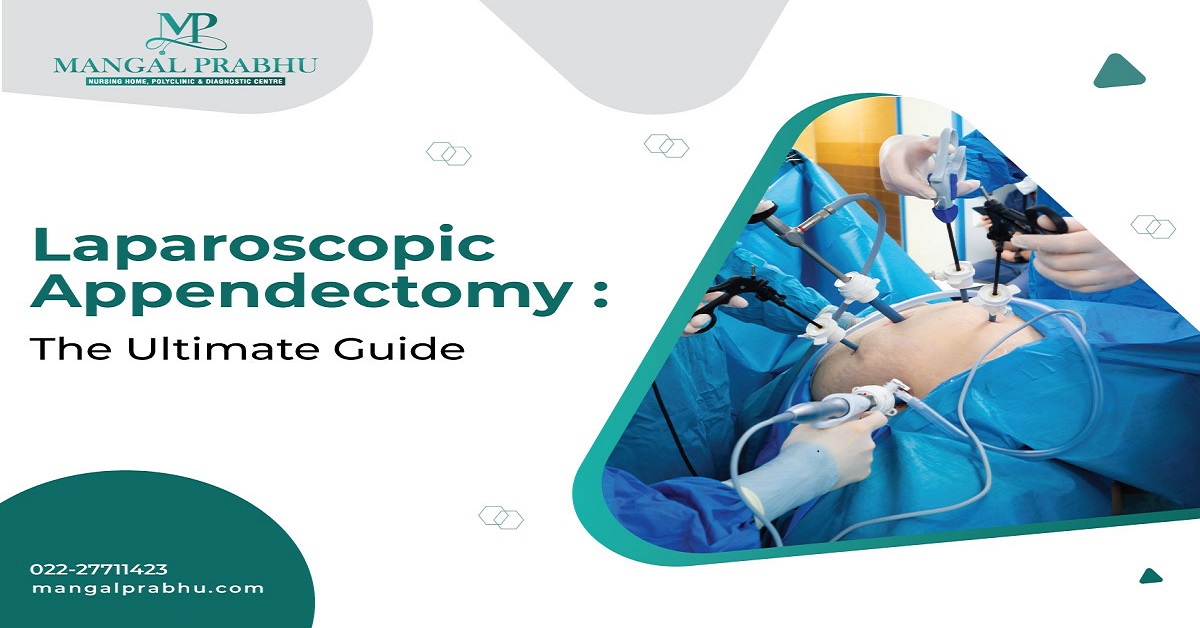
Laparoscopic appendectomy is an invasive surgical procedure that is administered in order to remove the appendix, a small pouch-shaped organ situated in the lower right side of the abdomen. This type of surgery is performed with the help of a laparoscope, a long, thin, flexible tube with a light and camera attached to the end.
During the process of laparoscopic appendectomy, the surgeon makes several small incisions in the abdomen and inserts the laparoscope and other surgical instruments through the incisions. The laparoscope allows the surgeon to see inside the abdomen and locate the appendix, which is then removed through one of the incisions. Like any other surgical procedure, a laparoscopic appendectomy also comes with certain important information or guidelines. Let’s examine what they are.
According to a laparoscopic surgeon in Navi Mumbai, it is vital to remember that based on the patient’s situation and the doctor’s inclinations as well as expertise, the laparoscopic appendectomy parameters can change. To examine the possibilities and decide which course of action is appropriate for their individual condition, patients should speak with their surgeon.
General recommendations for laparoscopic appendectomy include the following:
1. Patient Selection:
A laparoscopic appendectomy is usually an effective option for individuals with benign appendicitis who do not have significant medical complications and have not experienced any previous abdominal surgeries. An open appendectomy, however, might be essential for people who have serious or complicated appendicitis or other medical problems that raise the risk of surgery.
2. Preoperative Preparation:
According to the information gathered from a Laparoscopic Appendectomy Hospital in Navi Mumbai, patients should avoid eating or drinking for several hours before surgery. They should also inform their surgeon of any medications they are taking and follow any other preoperative instructions provided by the surgical team.
3. Anaesthesia:
A general anesthetic is administered during laparoscopic appendectomy.
4. Surgical Method:
A laparoscopic appendectomy involves a number of small abdominal incisions where the surgeon installs a laparoscope and other surgical instruments in order to remove the appendix. Normally, the process takes between 30 and 60 minutes to complete.
5. Postoperative Care:
Following a laparoscopic appendectomy, patients typically stay in the hospital for one to two days before being released once they are capable of walking, tolerate food, and have no fever. Within a week or two, they are usually able to resume their regular activities.
6. Potential Complications:
Such a technique has a chance of developing complications such as bleeding, infection, harm to nearby organs, and anesthesia reaction. Patients should notify the doctor instantly in such situations.
Also Read: A COMPREHENSIVE GUIDE TO GALLBLADDER STONE REMOVAL
Some advantages of laparoscopic appendectomy versus open appendectomy include:
1. Less Pain:
Less pain is experienced by patients following surgery because laparoscopic appendectomy is less aggressive than open appendectomy.
2. Minor Incisions:
Patients typically have smaller scarring after a laparoscopic appendectomy than they would following an open appendectomy because the procedure only calls for minor incisions.
3. Shorter Stay In Hospital:
Because laparoscopic appendectomy is typically done as an outpatient surgery, patients could either go home the same day as their surgery or only need a brief hospital stay.
4. Quicker Recovery:
Patients can resume normal activities relatively sooner after a laparoscopic appendectomy than that after an open appendectomy.
5. Reduced Risk of Infection:
The risk of infection and other consequences is lower with laparoscopic appendectomy.
6. Improved Aesthetic Results:
Compared to the bigger incisions used in conventional appendectomy, the small incisions for use during laparoscopic appendectomy are generally less noticeable.
Conclusion:
Overall, laparoscopic appendectomy is a critical procedure for treating appendicitis, a frequent ailment that, when left untreated, may result in catastrophic complications. Laparoscopic appendectomy offers the potential to enhance patient outcomes and save healthcare costs by enabling a speedier and less intrusive procedure.
